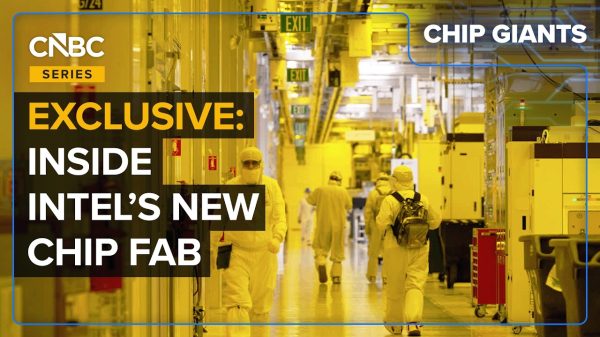Being CEO of a fast-growing technology company is challenging. Especially, if your company’s initial public offering is so hot even the famously tech-averse Warren Buffett invests.
What makes all this good news bad? The high stock market valuation intensifies the pressure to sustain rapid growth. If the company can’t capture a considerable share of a new, fast-growing market, investors will express their disappointment by dumping your stock.
Snowflake — the Bozeman, Montana-based cloud computing software company that went public in September 2020 with a $70 billion valuation — is betting generative AI will protect its shareholders from suffering this fate.
By June 26, Snowflake investors had suffered a 57% loss of value since the shares peaked in November 2021. They fell 13% last month after offering weaker-than-expected guidance for the current quarter.
Nevertheless, Snowflake’s stock price has recovered 43% from its June 2022 nadir.
Can Snowflake grow faster? Based on new products and a partnership to help companies benefit from large language models (LLMs), Snowflake has the potential to restore its rapid growth by gaining share in a generative AI market worth “hundreds of billions of dollars,” according to a Snowflake spokesperson.
Snowflake’s Performance and Prospects
On May 25, Snowflake — whose product is priced based on how much customers use its software for helping business to organize data in the cloud — reported rapid first quarter 2023 revenue growth.
However, investors sent its stock down 17% — its biggest one day drop, according to Bloomberg — on a slower than expected forecast for second quarter revenue.
Snowflake’s growth has been slowing dramatically since fiscal 2020 (ending in January 2020) when it enjoyed 174% annual growth — to 124% (2021), 106% (2022), and 69% (2023).
Here are the key numbers from its Q1 report, according to Bloomberg:
- First quarter product revenue. Up 50% to $590.1 million — about $20 million more than analysts projected.
- Second quarter product revenue forecast. Up about 34% to $625 million — about $21 million short of analyst estimates.
- Full year product revenue forecast. Snowflake lowered its fiscal 2024 outlook by $100 million since March to about $2.6 billion — which would mark 24% growth for the year.
CFO Mike Scarpelli told investors Snowflake bookings are slowing down “not due to competitive pressures, but because customers remain hesitant to sign large multiyear deals,” Dow Jones reported last month.
While Scarpelli said Snowflake does not face competitive pressures, incumbents and startups are introducing new products. According to Investor’s Business Daily, Salesforce recently introduced “Genie, a real-time data solution, that could clash with Snowflake at some point.” IBD noted Amazon Web Services or Google cloud could “ratchet up competition.” Finally privately-held Databricks — recently valued at $28 billion — could intensify competition, wrote IBD.
How Snowflake Will Benefit From Generative AI
In May, Snowflake discussed how much growth it expects from generative AI. CEO Frank Slootman said generative AI’s need to consolidate “massive amounts of data into a single cloud-enabled platform from which customers can derive insights and build applications” will boost demand for the company’s products, according to Snowflakes’s first quarter earnings call transcript.
In May, Snowflake said generative AI — was already enhancing growth. According to Slootman, “data science, machine learning, and AI use cases on Snowflake are growing every day. In Q1, more than 1,500 customers leverage Snowflake for one of these workloads, up 91% year over year.”
He said developers have used its Streamlit platform to build 1,500 LLM-powered apps, including Open AI’s GPT Lab that allows users to create custom AI assistants.
Snowflake expects the AI market to grow tenfold by 2032 to $118 billion in annual revenue. This adds considerably to Snowflake’s current total addressable market which the company expects to reach $248 billion by 2026.
As I wrote earlier this month, State Street, a provider of financial services to institutional investors, used Snowflake as a building block for its Alpha platform, “one of the industry’s first front- to-back asset servicing platforms.”
State Street is happy with Snowflake. As Executive Vice President, John Plansky told me in a June 20 interview, “Snowflake is a great partner. We started working with them in 2018 and their data management as a platform is better aligned to work in the cloud than other databases. Snowflake also has the ability to see interesting new opportunities in the asset management and other industries. They meet with us every three months and will keep investing in solving problems in our industry. Snowflake enables things we want to do faster.”
Generative AI Partnership With NVidia
During its Snowflake Summit 2023 which began June 26, the company made several announcements aimed at helping companies benefit from generative AI.
The one that strikes me as most compelling is a partnership with Nvidia to help companies build LLMs that solve company specific problems using their own data. According to SiliconANGLE, Snowflake and Nvidia will partner to enable companies to use Nvidia NeMo to train LLMs by accessing proprietary data they feed into the Snowflake Data Cloud.
Jensen Huang, Nvidia founder and CEO, expressed enthusiasm for the partnership. “Together, Nvidia and Snowflake will create an AI factory that helps enterprises turn their own valuable data into custom generative AI models to power groundbreaking new applications — right from the cloud platform that they use to run their businesses.”
The partnership will also help protect Snowflake customers from “LLM hallucinations” — the industry term for AI chatbots that produce unwanted responses or outright errors. As SiliconANGLE reported, Snowflake customers will have access to Nvidia’s NeMo Guardrails, “a software mechanism that helps make certain that generative AI models remain accurate and secure when in operation.”
Other New Snowflake Generative AI Services
Snowflake announced new services to tap the generative AI opportunity. As Slootman told me in a June 20 interview, “We will offer full support for Iceberg which will expand the amount of data companies can bring into the cloud.”
Snowflake also launched Document AI — based on AI technology Snowflake obtained when it acquired Applica in September 2022. Christian Kleinerman, Snowflake SVP of products, said during a press conference last week, “This allows you to take unstructured document and unstructured files and convert them into structured data that can be moved into traditional analytics or AI or even other machine learning processes,” according to Datanami.
Snowflake will provide Snowflake Native App Network — an App Store-like service for developers to build native Snowflake applications. “It will be an efficient, safe, and compliant way to build enterprise grade applications. We will send developers the check and make the apps available to small and medium enterprises in specific vertical markets without requiring them to build a complete enterprise stack,” Slootman told me.
Finally, Snowflake is offering Snowpark Container Services — a way to make legacy systems more easily accessible. “Container Services enable companies to wrap their legacy systems in Snowflake so they do not need to rebuild everything. It streamlines their access. One of our customers is Blue Yonder, a $1.5 billion revenue partner with 15 to 20 years of supply chain expertise,” he said.
Slootman declined to quantify how much additional revenue these services would generate. He said, “It is bigger than a bread box. It will take a large total addressable market and make it larger. Our Container Service will put us in a good position to help companies train LLMs.”
He anticipates LLMs will enable companies to ask and answer more important business questions. “For example, an insurance company might want to know ‘Why do we have a disproportionate number of injury claims in Florida and what should we do about it?’ To answer the questions, businesses would add more of their own data into the cloud and use it to train their LLM. Enrichment of data will drive demand from industries such as pharmaceuticals, healthcare, and retail,” Slootman concluded.
What’s Next For Snowflake Stock?
Snowflake — whose shares rose nearly 5% in mid-afternoon June 27 trading — is a few dollars shy of its average price target of $180.48 from 28 Wall Street analysts, according to TipRanks.
Morningstar is more optimistic — setting a target of $231. Analyst Julie Bhusal Sharma was concerned about Snowflake’s lower growth forecast and has a positive view of its longer-term prospects. “We believe Snowflake’s product has very sticky beginnings reflected in an outstanding net revenue retention rate of 151%. Snowflake boasts differentiated technical abilities in the data lake and warehouse markets with ample upside from its currently small but mighty data marketplace offering,” she wrote.
Although Slootman did not quantify the upside, he makes a compelling case that Snowflake revenues will grow as it enables companies to get deeper insight into their business problems by using their proprietary data to build generative AI that deliver high-payoff solutions.
Read the full article here









